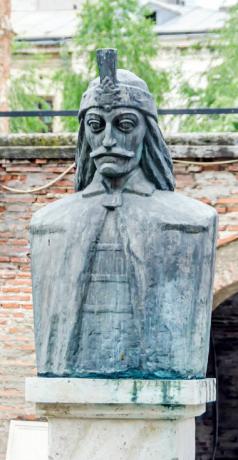Rarely, in the tradition of the horror genre (whether in literature or film), has a character had as much impact as the countDracula. This character was developed by the Irish writer bramStoker in an eponymous novel published in 1897. To write the book, Stoker focused on the study of legends and popular narratives from Eastern Europe, especially from the region of Carpathians, which integrates parts of the current countries of Romania, Ukraine, Poland, Slovakia and Hungary. These legends imply a mixture of vampire stories with Satanism and also refer to a real character, who lived in the Middle Ages, born in Transylvania, in the Romanian region. His name was Vlad III (1431-1476).
A story marked by terror and cruelty
THE Vlad III story is considered one of the most curious and cruel in history. Vlad III's Romanian surname was Dracuela, which means something close to “son of the dragon”. That's because his father, Vlad II, belonged to a religious sect whose symbol was the dragon. For this reason, Vlad III was also known as
Vlad Dracul¹ or, simply, Dracula. Both Vlad III and his ancestors were in bloody wars against neighboring peoples, especially Hungarians and Ottomans. The latter tried to expand their domains towards Eastern Europe after they had taken over the city of Constantinople in 1453 and entered into a long conflict with the Romanians.Vlad III was a prince and also known as Vlad Tepes, having reigned over a specific region of Romania called Wallachia. During their stay in power, warriors from other nations who were captured by the Romanians suffered torture and death fraught with extreme cruelty. The procedures, according to some books dedicated to the investigation of Vlad III's life, ranged from mutilations of the most varied parts of the body to decapitations and, above all, impalements. This last procedure consisted of depositing the body of a (living) person on a wooden stake. The point of perforation usually varied: either in the navel or in the anus. Death was slow, painful and agonizing.

Bust of Vlad III, the real “Dracula”.*
There is a story about how Vlad Tepes eliminated his political enemies: the prince is said to have organized a banquet for the other nobles of the Romanian territory, and just as he was serving them, Vlad's soldiers entered the compound, tied up the nobles, turned them over and impaled them. slowly. There is also the legend that the prince, while his guests were being killed, drank their blood. Because of these and other cruelties, Vlad III has become a feared and legendary character. Posterity began to associate his figure with mythological and demonic beings. The episode of “drinking the blood” of enemies long began to refer Vlad to the imagination of vampirism, which was taken advantage of by Bram Stoker.
In Bram Stoker's novel, which was constructed in the form of a collection of writings (diaries, newspaper news and letters) without a fixed narrator, there is clear references to the region where Vlad III lived, Carpathos, and to the peoples who lived there, as can be seen below, in an excerpt from the diary of one of the characters, Jonathan Harker:
“At nightfall we entered a gorge: to right and left the Carpathians were tinged blue and purple at the tops; and of green and gray in the ravines. In the distance, you could see the snowy peaks, which the sunset was turning pink. We came across a few rare passersby, Slovaks in picturesque costume. Some carried a horrible conversation around their necks. Crosses rose along the way. Before each one of them, my companions crossed themselves piously.”[2]
Count Dracula in cinema
The legends about Dracula, or Vlad III, were exhaustively worked by the cinema. Three productions stood out: “Drácula”, from 1931, directed by Tod Browning and performed by Bela Logosi; 1958's “Dracula,” directed by Terence Fisher and played by Christopher Lee; and 1992's “Bram Stoker's Dracula,” directed by Francis Ford Coppola and played by Gary Oldman.
*Image Credits: Shutterstock and christian
GRADES:
[1] It is noteworthy that the term “dracul”, in contemporary Romanian, has the meaning of “devil”, due to the macabre connotation that the bearer of the name gave it.
[2] STOKER, Bram. Dracula the man of the night. (trans. Lúcio Cardoso). Rio de Janeiro: Brazilian Civilization, 2013p. 14.
By Me. Cláudio Fernandes
Source: Brazil School - https://brasilescola.uol.com.br/curiosidades/vlad-iii-verdadeiro-conde-dracula.htm

